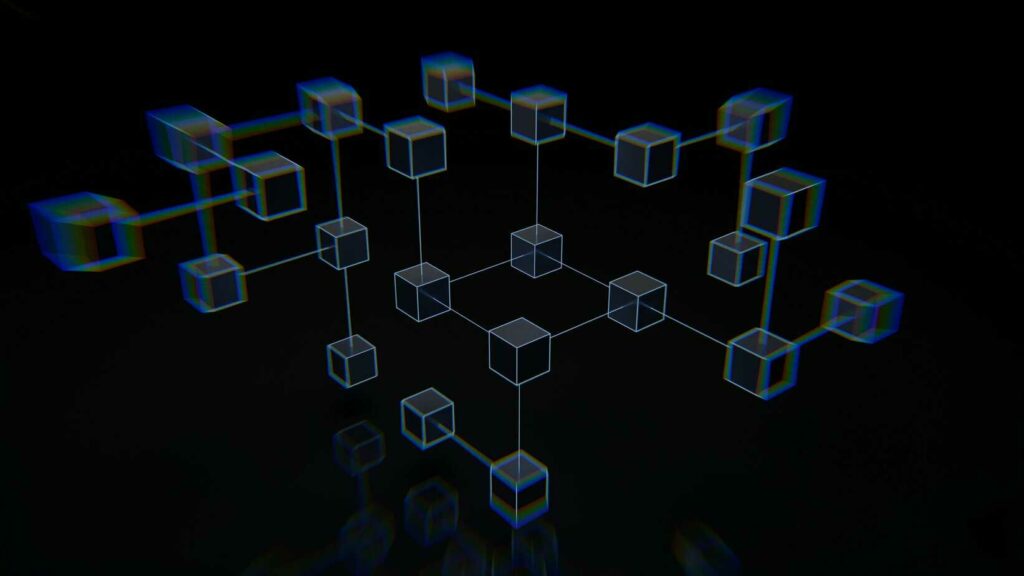Blockchain technology has taken the world by storm in recent years, offering transformative potential in industries ranging from finance to healthcare to government.
But what happens when you combine it with cybersecurity? The intersection of distributed ledger technology and cybersecurity presents opportunities and challenges that could change the landscape of information processing and protection as we know it.
Today, cybersecurity is a critical item on the agenda of every business and organization. The frequency and sophistication of cyberattacks is increasing, putting privacy, intellectual property, and corporate integrity at risk.
Moreover, it’s estimated that cybercrime will cost global companies $10.5 trillion annually by 2025. This figure is alarming and reflects the urgent need for more effective cybersecurity solutions.
Enter blockchain, a technology that promises to be more complex than you might think. Join us as we explore what it consists of, as well as its key opportunities and challenges in a 2023 that expects the use of the most advanced technologies.
Ready for a jump-start? Let’s get going!
The scope of blockchain
The way it works is quite ingenious.
Each record is stored in a block, which is connected to other blocks via a distributed ledger technology. Each block contains a series of transactions, and each transaction is verified and validated by a network of computers before being added to the block.
So, what is a blockchain ? Basically, it’s a decentralized database that allows digital records to be created and stored in a secure and reliable manner.
The information stored in each block is immutable and cannot be changed without changing all subsequent blocks in the chain, making it highly resistant to manipulation.
In addition, the decentralized nature of the technology means that there is no single point of failure, making it much more secure than centralized databases.
In terms of cybersecurity, distributed ledger technology is widely used to protect sensitive information and financial transactions. For example, cryptocurrencies such as bitcoin rely on this technology to ensure that transactions are secure and reliable.
4 opportunities in the combination of blockchain and cybersecurity
Third-party risk management
One of the biggest challenges in cybersecurity management is assessing risks for third parties.
This includes service providers, contractors, business partners, and others who have access to an organization’s information and systems. In this context, this technology can add value and be used to:
- Create a decentralized and transparent network of audit trails, verification and tracking of third-party activities
- Significantly improve an organization’s ability to assess risk and take appropriate security measures
Imagine an organization looking to hire a service provider to manage its online payment system.
Using a distributed ledger technology, the organization can quickly verify the authenticity and integrity of the information provided, including its history of compliance with security regulations and policies.
In addition, any changes to the terms of the relationship can be recorded in real time, enabling immediate response to potential threats. That’s what third party risk management is at its core.
Secure data storage
As we explained, this system is immutable and decentralized, meaning that any data stored in it cannot be altered or deleted without leaving a trace. This characteristic is ideal for:
- Storing critical data that requires extra protection against tampering and theft
In cybersecurity, this can be especially useful for storing access logs, digital certificates, passwords, and other sensitive data that requires high security. For this, major corporations are turning to blockchain technology to achieve major storage advancements.
Distributed Digital Identity
Digital identity is a critical issue in the digital world, as many online services and transactions depend on it.
However, centralized databases used to store identities are vulnerable to cyber-attacks. One solution to this problem is the creation of decentralized, blockchain-based digital identities.
These identities can be authenticated and verified without the need for a centralized database, significantly reducing the risk of recovering from a major data loss.
Intrusion Detection Systems
Intrusion Detection Systems (IDS) are essential tools for securing networks and computer systems.
However, traditional IDSs are limited by their inability to share information between systems.
Distributed ledger technology can solve this problem by:
- Creating a decentralized IDS network that can share information securely and efficiently
- Improving intrusion detection and reducing the risk of cyberattacks
These systems work by detecting traffic patterns and suspicious behavior on a network or system. They can do this more securely and efficiently over time.
4 challenges at the intersection of blockchain and cybersecurity
Although we’re talking about a very secure technology, there are still some major challenges at its intersection with cybersecurity. In particular, there are four major challenges that need to be addressed:
Network attacks
Blockchain is a decentralized and distributed technology, which means that all nodes in the network must agree on the information stored in the blockchain.
Therefore, if an attacker is able to take control of a large number of nodes, they can change the information in the distributed ledger technology or even destroy it completely. This type of attack is known as a 51% attack because the attacker controls more than half of the nodes in the network.
To prevent this type of attack, developers have implemented several consensus mechanisms, such as:
- Proof of Work (PoW)
- Proof of Stake (PoS)
They make it much more difficult for an attacker to take control of a large number of nodes. However, these mechanisms are not foolproof, and developers must continue to work on new ways to protect the network from attacks.
Private key theft
Private keys are essential to the functioning of the blockchain, as they allow users to access and move funds stored in a wallet.
However, if a private key falls into the wrong hands, the wallet owner risks losing all of their funds.
To prevent the theft of private keys, many developers have implemented security measures such as:
- Two-factor authentication
- Cold storage (offline)
In addition, it is important that users take additional steps to protect their private keys, such as using strong passwords and not sharing them with anyone.
Malicious Smart Contracts
Smart contracts are computer programs that run automatically when certain conditions are met.
While smart contracts are an essential part of many blockchain applications, they can also be exploited by malicious attackers.
If a smart contract has a vulnerability, attackers can exploit it to take control of the contract and steal the funds stored in it. To address this issue, it’s important to:
- Perform thorough security audits of your smart contracts before deploying them on the network.
- Ensure that you are interacting with trusted contracts and that you fully understand how they work before using them
Importantly, because they are distributed across thousands of computers, you can avoid having a large company guard them, eliminating bureaucracy, censorship, and high costs. However, it’s really imperative to take these measures to get the most out of them.
Lack of interoperability
One of the main benefits of blockchain is that it enables interoperability between different networks and applications. However, this can also lead to security issues if the different networks do not communicate properly.
Because there are several different distributed ledger technologies, each with their own rules and protocols, interoperability between them can be complicated.
If an attacker were able to exploit an interoperability flaw, they could manipulate data between blockchains and compromise the integrity of the data stored on them.
Blockchain as a multi-factor experience
The combination of blockchain and cybersecurity offers a number of exciting opportunities to improve the security of IT networks and systems. These include:
- Third-party risk management
- Secure data storage
- Distributed digital identity
- Intrusion detection systems
These are just a few examples of how this technology can be used to improve information systems and why cybersecurity matters now more than ever. However, as with any emerging technology, there are significant challenges that must be addressed:
- Network attacks
- Scalability
- Interoperability
- Data privacy
Despite these challenges, distributed ledger technology remains a valuable tool in the fight against cybercrime. The immutability and decentralization characteristics of the technology make it highly resistant to manipulation and attack.
In addition, the decentralized nature of the technology means that there is no single point of failure, making it much more secure than centralized databases. The combination of blockchain and cybersecurity can help to:
- Protect critical information and financial transactions
- Improve third-party risk management
- Create distributed digital identities
- Improve network intrusion detection
We discussed a promising technology that can significantly improve cybersecurity in many ways. Work through the challenges associated with its adoption and realize its full potential for your business or personal finances.
Author’s Bio:
Guillermo is a Venezuelan SEO content writer currently living between Uruguay and Argentina. He is currently a head content writer for Skale. His articles have reached more than two million people across the Americas. He is a firm believer in love, dulce de leche and Kelly Clarkson.





